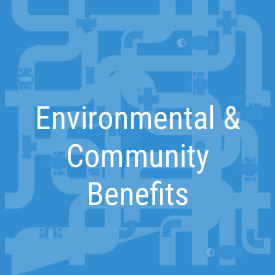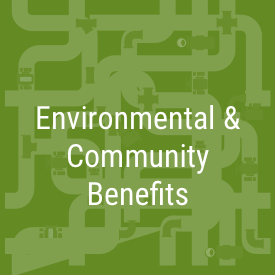Valley Water’s Watershed Master Planning engages the community and uses equitable metrics to identify flood protection and stream stewardship priority actions for a sustainable future.
The Upper Pajaro Watershed and Guadalupe Plans will be considered for adoption on April 9, 2024.








The watershed master planning process includes stakeholder cohorts representing academic, agriculture, business, civic/public policy, environmental, flood, housing and neighborhoods, local government, open space and conservation, resource conservation, state government, stormwater, transportation, tribal, and water supply. Public input received on the Guadalupe and Upper Pajaro Watershed Plans is provided below.
- Public Participation Process: Upper Pajaro Watershed
- Project Manager: Nick Mascarello - [email protected]
- Public Participation Process: Guadalupe Watershed
- Project Manager: Katie Muller - [email protected]
Valley Water faces the challenge of delivering reliable water supply, maintained and improved flood risk reduction, and preserved and enhanced environmental stewardship with finite resources. To do this well, Valley Water needs a decision-making process to strategically allocate limited resources towards actions that most efficiently achieve its mission and service to the community. To meet this need, this One Water planning effort provides an important new roadmap for integrated resource planning on a watershed scale.
HOW WILL THE PLAN WORK?
The tiered plan begins with a countywide framework (Tier I) to establish guidance for watershed-specific plans. Then each of the five major watersheds in Santa Clara County – Coyote, Guadalupe, Pajaro, West Valley, and Lower Peninsula – will have their own master plan (Tier II) that will guide future decisions on priority actions to protect or enhance our community and environment.
The plans will also provide a basis for partnerships with other agencies, funding initiatives, grant opportunities, and new policy recommendations.
These are intended to lead to:
- An integrated approach to water resources management supported by the community
- A sustainable watershed habitat
- Enhanced relationships with public and regulatory agencies
- Improved living environment for residents and wildlife
We estimate that it will take up to three years to complete the plans for all five watersheds, following completion of the countywide plan. The first watershed-specific plan will be Coyote Watershed (draft complete), followed by Guadalupe and Pajaro, and then Lower Peninsula and West Valley watersheds. We anticipate the implementation of these plans will lead to new projects, programs, policies and partnerships.
MEASURING PROGRESS
One key to making One Water a successful plan is its measurable objectives. By establishing a baseline and target conditions for each objective, Valley Water can help track improvements in watershed health and water resources management.
Table 4-2 below represents draft measures for assessing the status of the five objectives in the One Water Plan. Each objective (A thru E) will be measured via specific attributes and metrics, and watershed targets where applicable, as described in the One Water Countywide Framework and subsequent watershed plans. Priority actions will be determined in part by how they improve conditions toward meeting targets.
HISTORY
The One Water Plan builds on Valley Water’s rich history of planning and implementing projects for a reliable water supply, improved flood protection, and enhanced environmental stewardship. Beginning in 2013, the One Water Plan started to develop its integrated water resources approach through a countywide framework and five watershed plans.
BACKGROUND
QUICK FACTS ABOUT THE ONE WATER PLAN
|
WHAT |
|
|
WHY |
|
|
WHERE |
|
|
WHEN |
|
Related Information
- Bay Area Greenprint
- Bay Area Integrated Regional Water Management Plan (IRWMP)
- Coyote Valley Landscape Linkage Report (Open Space Authority)
- EcoAtlas
- 2016 Groundwater Management Plan
- Guidelines and Standards for Land Use Near Streams
- Resilient Silicon Valley
- Santa Clara Valley Greenprint Report (Open Space Authority)
- Santa Clara Valley Urban Runoff Pollution Prevention Program
(SCVURPPP) - Watching our Watersheds (WOW) Interactive maps of county watersheds
- Watershed Management Initiative (WMI)
- Water Supply Infrastructure Master Plan
- Valley Habitat Plan









